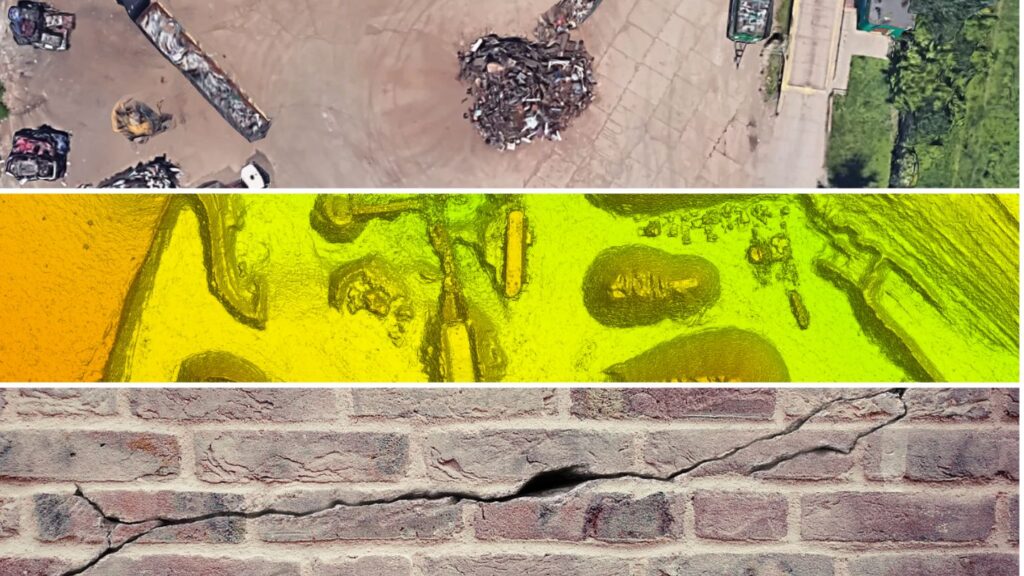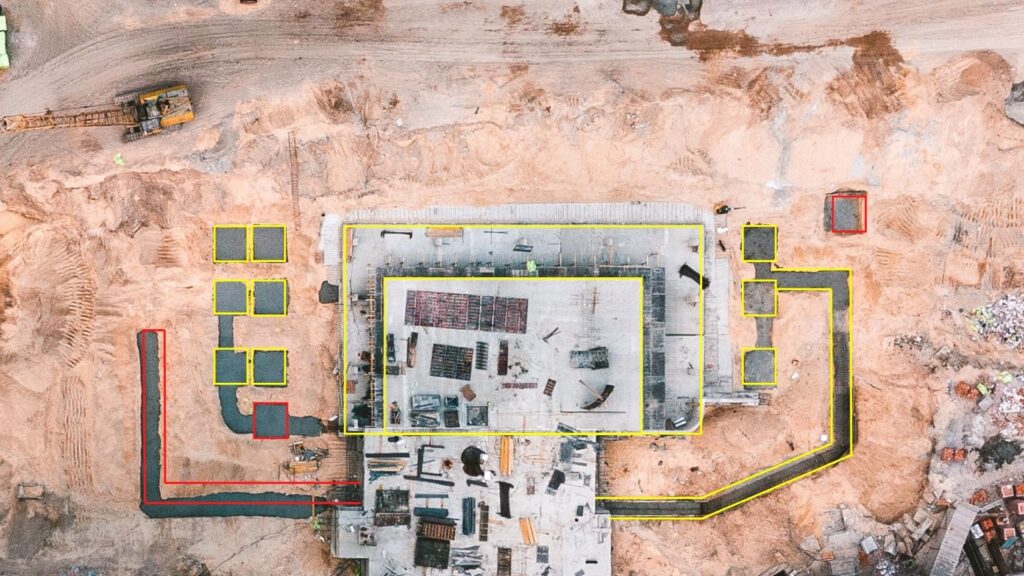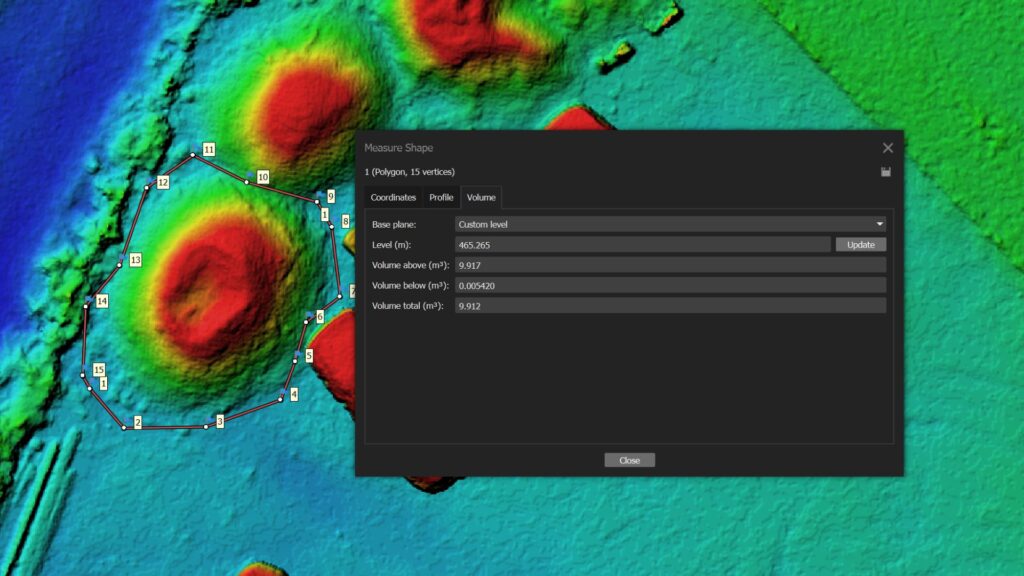SERVICES FOR THE CONSTRUCTION INDUSTRY

The first Situation Orthophotoplan (along with the DTM/DSM) made even before construction work begins allows for evaluation and analysis:
Data from a photogrammetric or LiDAR raid allows the precise development of a Digital Terrain Model and Dense Cloud for analysis and monitoring of earthworks. With this solution, construction management can:
In addition, based on the Periodic Situation Orthophotoplan, managers can compare the extent of completed earthworks with the plan on an ongoing basis (by superimposing the vector execution plan on the orthophotoplan) and conduct a quick discrepancy analysis.


Fully metric Situation Orthophotoplans taken periodically during the execution of key elements of foundation structures allow:
Each periodic raid allows the generation of a dense point cloud (Dense Cloud) for spatial analysis and 3D measurements.
The data collected during photogrammetric raids also allows for a very precise control measurement directly on the images by the "multiple forward indentation method" right after the aerotriangulation process (a fast method that does not require the generation of a dense point cloud).
Fully metric Situation Orthophotoplans taken periodically during the execution of key elements of the construction and assembly and installation works allow:
Each periodic raid allows the generation of a dense point cloud (Dense Cloud) for spatial analysis and 3D measurements.
The data collected during photogrammetric raids also allows for a very precise control measurement directly on the images using the "multiple forward cut" method right after the aerotriangulation process (a fast measurement method that does not require the generation of a dense point cloud).


The Digital Terrain Model and Situation Orthophotoplan generated from a photogrammetric or LiDAR raid allows for quick analysis of resources at the construction site:
Periodic inspection of aerial assets using DTM/DSM or orthophotoplans makes it possible to clearly assess inventories and optimize logistics processes.
Regular photogrammetric or LiDAR raids throughout the construction project result in a set of structured reports or studies, for which the key digital data sets are the base: Dense Cloud (Point Cloud), Digital Terrain Model (DTM/DSM) and Situation Orthophotoplan.
Each of these reports or studies supports the day-to-day activities of the construction manager, construction supervisor or any specialist responsible for a particular stage or process in the project.
It is also a very valuable source of information in the process of analyzing archival events - whether for project decisions, compensation processes, pending litigation or scientific studies, for example.

We carry out all raids with equipment with RTK modules installed, allowing the algorithms of specialized photogrammetric software to calculate the precise centers of projections of images taken during UAV operation. Positioning accuracy - depending on the location and ion- and troposphere interference reaches centimeter values.
In addition - depending on the type of order and area - we use the local reference grid established by our team - the so-called photopoints. Each photopoint is precisely measured with hand-held GPS/RTK receivers and forms part of the reference grid for subsequent photogrammetric data processing.
All point clouds, orthophotoplans, DTM/DSMs and 3D models therefore have a mapping quality that allows measurements and digital inspections to be made without the need for cumbersome local visits.
OTHER INDUSTRIES:
